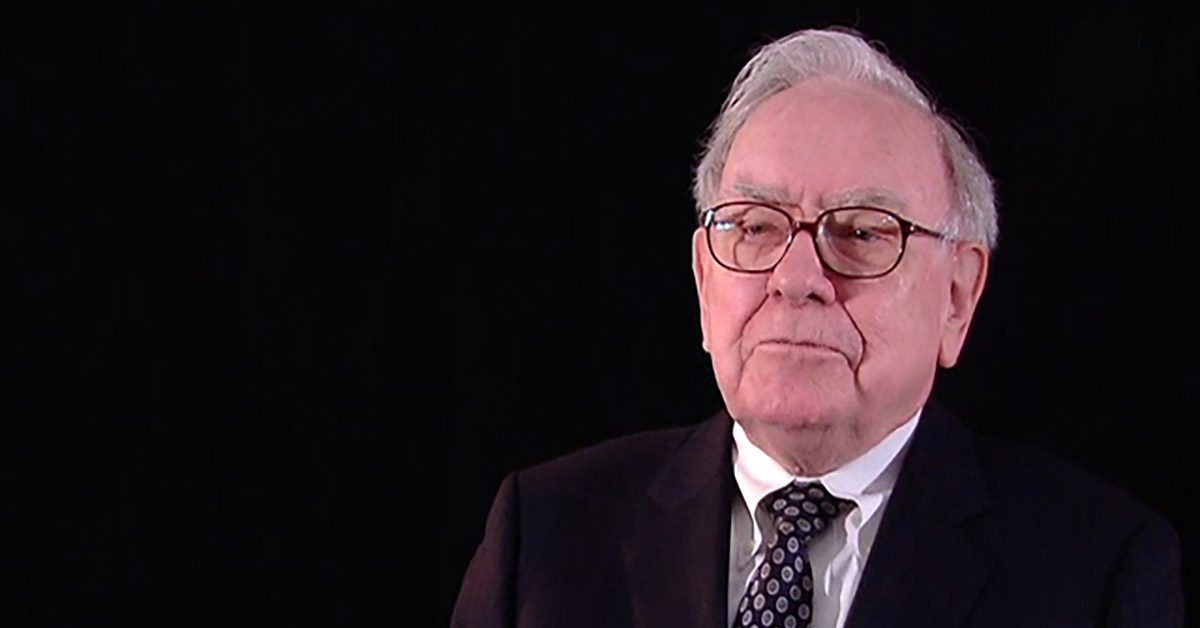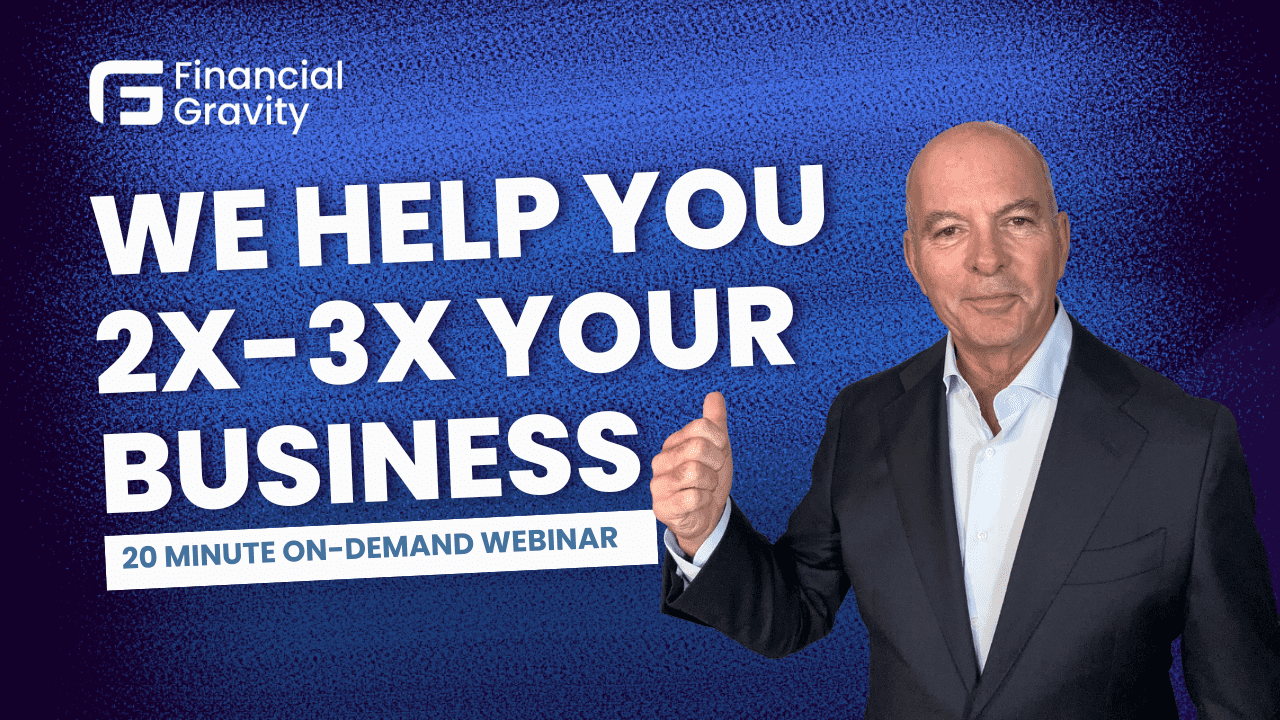Take a Few Moments for Some Very Wise Advice
Do the talking heads on the financial cable shows know what moves the markets? Can you remember any of them ever saying, “Geez, I don’t know why the market was down today.” We don’t have to wonder what caused the market volatility in the first couple of weeks of April; it was all about the tariffs and the reordering of global trade. Several trillion dollars of total market cap was lost and mostly gained back in 5 trading days. The “magnificent seven” NASDAQ stocks added over $1.5 trillion in market cap in a single day, with TESLA seeing a 22.7% gain. So, where are we? Is the market in a bubble, was the bear just a blip, or was it a harbinger of things to come? The urge to take some action—to take flight or to fight—can feel overwhelming for many clients. Let’s review where we are and then turn to America’s favorite investor for some comforting advice that clients would benefit from hearing.
Whipsaw
Over the two trading days of April 3rd and 4th, the S&P 500 saw a cumulative decline of over 10%, while the NASDAQ was down 11.4%. On April 9th, the S&P 500 jumped 9.6%, and the Nasdaq gained 12.2%. It was the S&P 500’s best day since 2008 and the third-biggest gain since the 1930s. It was the Nasdaq’s largest point gain since 2001 and the second-largest percentage rise on record. This was precisely the kind of volatility that can lead to a whipsaw, an old market trader’s term for something awful.
The term comes from a saw used by two people—one pulls one way, and the other pulls the opposite way. Whipsaws are often caused by trying to time the market, which is generally regarded as the principal cause of investor failure. Whipsaws happen when investors speculate on the market’s behavior and are emotionally and financially costly. Long-term investors avoid whipsaws by sticking to disciplined strategies and not reacting to every market move.
Much of what we’re seeing in the markets—sharp reversals, valuation bubbles, and investor overreactions—is deeply familiar to anyone who’s studied past cycles. If one were to write the stock market’s history, an apt title might be “A Cautionary Tale”.
Whipsaws often result from overvaluation of hype-driven stocks. Past examples would include the dot-com bubble of 2000 or even the Nifty Fifty of the 1970s. Current P/E ratios are historically high, especially in Tech and notably in the magnificent seven. Emotions driving the market—fear, greed, FOMO, panic—haven’t changed. They just wear modern clothes.
A Feature, Not a Bug
The recent waves of market volatility, driven by geopolitical tensions, rising interest rates, trade policy shifts, and concerns over real estate and inflation, have again underscored timeless truths about investing. While short-term swings can be unnerving and lead many to speculate, they can also deliver essential lessons that help investors build long-term resilience and better portfolios.
Lesson one, of course, is that market timing is a losing game. Many investors attempt to sidestep downturns by moving in and out of the market. However, volatility tends to cluster, and some of the market’s biggest gains happen close to its biggest losses—we have just witnessed a prime example. Missing just a handful of strong recovery days can dramatically impact long-term returns. Investors who stayed invested through the recent sell-offs and rebounds demonstrate that discipline outperforms predictions.
Second, diversification is not just a buzzword. Periods of volatility reinforce the value of diversification across asset classes, sectors, and geographies. While tech stocks saw sharp pullbacks this year, other areas like energy, health care, and dividend-paying stocks have improved. Diversification doesn’t eliminate losses but helps reduce portfolio-wide risk and smooth out returns.
Emotions are the real risk. Panic-selling at the bottom and euphoric buying at the top are behaviors that destroy wealth. Volatility is a stress test not only for portfolios but for investors themselves. The best antidote is a sound financial plan rooted in realistic goals, appropriate risk tolerance, and regular rebalancing. Investors who know their “why” are far less likely to be shaken by short-term noise.
Cash and liquidity have a role. Recent events have highlighted the importance of maintaining access to liquidity. Investors who didn’t have to sell assets at depressed prices to meet short-term needs are better positioned to ride out the storm. Holding an emergency fund or a strategic cash buffer can be a powerful tool for peace of mind and opportunity.
Here’s the bottom line: Volatility isn’t a bug of the system—it’s a feature. Long before there was a stock market, Aesop wrote fables about the human condition. The Tortoise and the Hare, The Fox and the Grapes, and The Ant and the Grasshopper are all useful metaphors for investors. For those paying attention, the lessons learned this month can pay dividends for the rest of their investing lives.
Even financial advisors may be surprised to learn that as of April 9, 2025, the S&P 500 has experienced a one-year return of approximately 6.5%, while the Nasdaq Composite has seen a one-year return of about 3.8%. We live in a prime example of Prospect Theory; few clients are focused on these modest one-year gains as their reference point for gain or loss will have moved to the market tops. That’s just human nature.
Here is another statistic: As of April 9, 2025, the S&P 500’s price-to-earnings (P/E) ratio was approximately 27.43. This represents a decrease from its December 2024 level of around 30. A 30 P/E is nearly double the historical average, and even 24 would be considered seriously inflated. Have we been in a bubble? Are we still, and is the market simply correcting its irrational exuberance?
Another important statistic to consider is this one: the forward P/E Ratio. Based on projected earnings over the next 12 months, the market’s forward P/E is a tad under 20. That’s a little higher than the long-term average but hardly a bubble. Investors saw massive buying opportunities on April 9th, demonstrating real confidence in the future performance of stocks.
Bubble to Bear and Back Again
There is a convincing argument that stock prices, especially in tech and especially in “the magnificent seven”—Apple, Microsoft, Alphabet, Amazon, Nvidia, Meta, and Tesla—have been trading far above historical averages. Some companies with little or no profits have been valued in the tens and even hundreds of billions of dollars, fueled by speculation of future profits. Examples would be DoorDash, Rivian and Snowflake. If there is a “flight to quality,” we would not be surprised to see these companies come under pressure.
Stocks have been driven by the pre-COVID easy money policies of the Fed, and a surge in retail trading driven by social media hype rather than fundamentals. Meme stocks like GameStop and AMC show all the earmarks of speculative excess and herd behavior, often known as FOMO. We’ve also seen assets move from troubled real estate sectors into stocks offering liquidity and diversification. There are parallels between 2001 and 2008, two periods in which we saw a rapid transition from bubble to bear.
As we have noted many times in these blogs, speculating on events over which we have no control is one of the most damaging things an advisor or an investor can do. Investors who simply rode out the Tech Wreck and Global Financial Crisis have seen dramatic increases in their wealth. Here are a few data points that you might want to write on a rock:
The S&P 500 reached its lowest point during the early 2000s bear market on October 9, 2002, closing at 776.76. The S&P 500 hit its lowest point during the 2008 financial crisis on March 9, 2009, closing at 676.53. As of April 9th, the index was at 5,396.52. As we say, a dramatic increase in wealth and an unrealized long-term gain for the patient. Advisors who could keep their clients on course eventually looked like heroes.
The Oracle Speaks
To help ease the stress of all this current volatility, we thought it might help to call on the wisdom of Warren Buffett, the Sage of Omaha and arguably the world’s greatest investor. Buffett’s quotes are always good to have in times like these. You may notice a theme: Market timing is a terrible idea, whereas patience is a virtue.
“Be fearful when others are greedy and greedy when others are fearful.” Possibly Buffett’s most famous quote about stock market investing, this is a reminder to avoid herd mentality and avoid the sell low/buy high trap. In addition, investors who view corrections and bears as buying opportunities can acquire great companies at great prices.
“The stock market is designed to transfer money from the Active to the Patient.” Year after year since it was first published in 1994, Dalbar’s Quantitative Analysis of Investor Behavior has shown the underperformance of retail investors versus benchmarks. In the 30 years between 1997 and 2016, while the S&P 500 enjoyed an average annual growth rate of 10.2%, the average American stock fund investor only achieved a 2.6% average return.
Even more dramatic, in the glory days of Peter Lynch, the Magellan fund produced an average annual return of 29%. In contrast, the average return of an investor in the fund was negative. These are cautionary tales about the dangers of market timing.
“The most important quality for an investor is temperament, not intellect.” Put simply, emotional control beats IQ in the market. One effective way clients can gain more composure is to look at their account less frequently and to turn down the noise. It probably won’t benefit them to pay attention to the talking heads and market prognosticators, who are there to get views and clicks and who will benefit if right or wrong, no matter what the market does.
“Our favorite holding period is forever.” With this, Buffett emphasizes long-term investing and belief in your businesses. Buffett is different from the retail world, concentrating considerable stakes in companies like American Express, Apple, and Coke, and holding them for decades, through bull, bear, and boring markets. For diversified investors, the belief should be in American capitalism and creative destruction, both of which have been tremendous wealth creators. The beauty of investing in reconstituting indexes, like the S&P 500, is that losers are continuously replaced by winners, with no need for investor trading or changes to holding period.
“The best chance to deploy capital is when things are going down.” When Nordstrom has a sale, the parking lots are jammed because shoppers love to buy quality goods at reduced prices. There is absolutely no difference when it comes to stocks or other assets. Crises can be opportunities for wise investors.
“Risk comes from not knowing what you’re doing.” While educating your clients can only be a good thing, they don’t need to be a Buffett to benefit from investing in stocks. Help them find a level of risk exposure they can live with and then structure a broadly diversified portfolio. Avoid market timing and speculation, be patient, and over the long haul, they will become wealthier through the ups and downs if history is our guide.
There is no way to paint the current market volatility as fun to watch, but you would benefit from taking a dispassionate view and looking at it like Warren Buffett does. The history of the U.S. stock market is a tale of bubbles and bears and historic wealth creation. In the same way the Tech Wreck has largely faded into the past, so too will this current so-called crisis.
One last word: if your client cannot handle the current volatility, it’s a sign that their risk exposure isn’t set correctly. In the worst bear markets over the past 100 years, even the S&P 500 has lost 50% of its value for a time. Although it’s always recovered, that can be too big a drop for many investors. Financial Gravity’s Real Risk Meter ™ can be a wonderful tool to help clients discover how much loss they can tolerate.





















